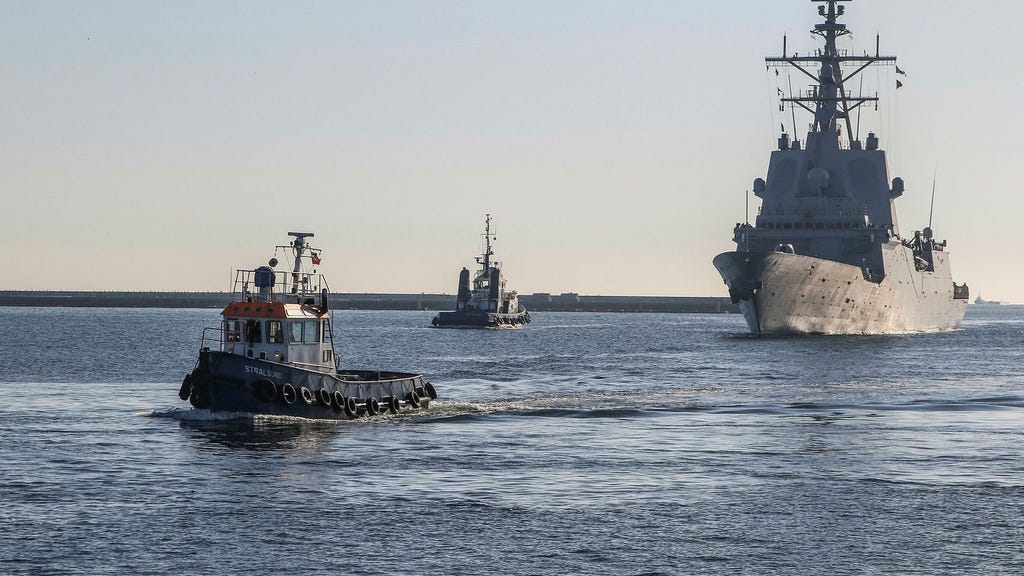The Vulnerability of Undersea Infrastructure and NATO’s Response
The security of undersea critical infrastructure, including communication cables, has become a pressing concern for nations, particularly those bordering the Baltic Sea. Finnish Foreign Minister Elina Valtonen has highlighted the emerging threat of hybrid warfare targeting these vital assets, emphasizing the need for robust and multifaceted countermeasures. While NATO has deployed two vessels to mitigate risks and enhance surveillance, Valtonen acknowledges that patrolling the vast expanse of undersea infrastructure is practically impossible. The focus, therefore, must shift towards advanced technological solutions, including enhanced monitoring and the integration of artificial intelligence. This technological approach is crucial for identifying suspicious vessel behavior and preemptively addressing potential threats.
A key aspect of addressing this challenge involves clarifying the legal framework surrounding civilian maritime traffic and its potential for sabotage. Existing laws and international agreements regarding freedom of navigation must be re-evaluated in light of the evolving hybrid threat landscape. Valtonen emphasizes the urgency of finding new interpretations of existing regulations to account for the malicious use of civilian vessels in hybrid operations. International negotiations for new treaties are deemed too slow and uncertain, necessitating a more agile approach to adapt to the rapidly changing security environment. A meeting of Baltic Sea NATO members, including Sweden, is scheduled to discuss these legal intricacies and explore options within the current legal framework.
Finland’s concerns regarding the risks posed by Russia’s shadow fleet are long-standing, initially focused on environmental and maritime safety. However, the threat has now expanded to encompass critical infrastructure. Valtonen underscores Finland’s firm resolve to address these threats decisively, escalating efforts to deter and counteract malicious activities. The upcoming NATO summit, with the presence of a European Commission representative, provides a crucial platform for advancing these discussions and exploring potential regulatory adjustments within the EU framework.
While concrete actions are being pursued to address these hybrid threats, Valtonen cautions against premature invocation of NATO’s Article 4, which calls for consultations among member states. She emphasizes the importance of a clear objective before triggering such a mechanism, expressing confidence in the current efforts of Finnish authorities and the ongoing development of a more robust response capability. While acknowledging that hybrid attacks and state-sponsored terrorism could warrant the activation of NATO articles, Valtonen maintains that the current situation, referring to recent cable damage incidents, does not necessitate such a measure.
Valtonen emphasizes the need for a comprehensive approach, combining technological advancements with legal clarity. Leveraging modern technology, particularly artificial intelligence, is crucial for identifying suspicious maritime activity. This approach complements the legal efforts to clarify the boundaries of acceptable civilian maritime behavior in the context of hybrid warfare. The combination of technological surveillance and legal frameworks aims to create a more secure environment for undersea infrastructure, safeguarding vital communication links and protecting against potential disruptions.
This multifaceted strategy, combining technological innovation with legal adaptation, underscores the seriousness with which Finland and its NATO partners are approaching the security of undersea infrastructure. By focusing on both proactive monitoring and clarifying the legal framework, these nations aim to establish a robust defense against emerging hybrid threats, ensuring the resilience of critical communication networks in an increasingly complex geopolitical landscape. The challenge requires not only immediate responses like deploying patrol vessels but also long-term strategies encompassing international cooperation, legal adjustments, and the ongoing development of advanced monitoring technologies.














